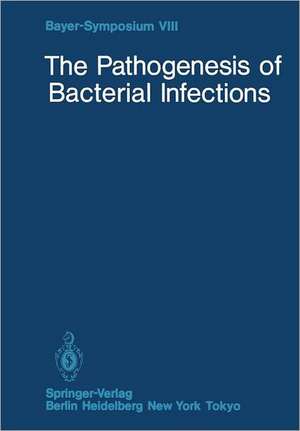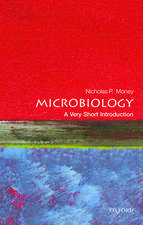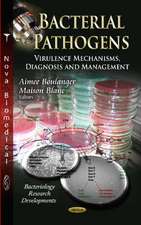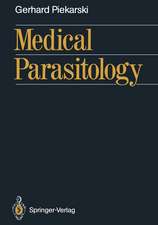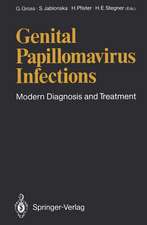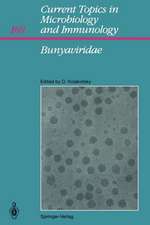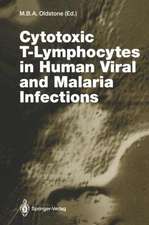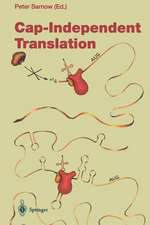The Pathogenesis of Bacterial Infections: Bayer-Symposium, cartea 8
V. Braun Editat de George G. Jackson Z.A. McGee Editat de Herbert Thomas W. Opferkuchen Limba Engleză Paperback – 17 noi 2011
Preț: 727.61 lei
Preț vechi: 765.90 lei
-5% Nou
Puncte Express: 1091
Preț estimativ în valută:
139.22€ • 145.36$ • 115.23£
139.22€ • 145.36$ • 115.23£
Carte tipărită la comandă
Livrare economică 04-18 aprilie
Preluare comenzi: 021 569.72.76
Specificații
ISBN-13: 9783642703539
ISBN-10: 3642703534
Pagini: 452
Ilustrații: XVI, 432 p.
Dimensiuni: 170 x 244 x 24 mm
Greutate: 0.71 kg
Ediția:Softcover reprint of the original 1st ed. 1985
Editura: Springer Berlin, Heidelberg
Colecția Springer
Seria Bayer-Symposium
Locul publicării:Berlin, Heidelberg, Germany
ISBN-10: 3642703534
Pagini: 452
Ilustrații: XVI, 432 p.
Dimensiuni: 170 x 244 x 24 mm
Greutate: 0.71 kg
Ediția:Softcover reprint of the original 1st ed. 1985
Editura: Springer Berlin, Heidelberg
Colecția Springer
Seria Bayer-Symposium
Locul publicării:Berlin, Heidelberg, Germany
Public țintă
ResearchCuprins
Welcome.- Session 1: Infection of Mucosal Surfaces.- Molecular Mechanisms by Which Pathogenic Bacteria Interact with Host Mucosal Cells.- Antigen Expression Influencing Tissue Invasion of Hemophilus influenzae Type B.- Surface Factors and Nasopharyngeal Colonization by Hemophilus influenzae B.- The Molecular Organization of Gonococcal Pili.- Functions of the Outer Membrane Proteins of Neisseria gonorrhoeae.- Regulation of Lipopolysaccharide Biologic Activity by Polysaccharide.- Mucosal Immunoregulation: IgA Inductive Sites, Isotype-Specific Helper T Cells, Gut LPS Influence, and Subclass Distribution of IgA Antibodies.- Session 2: Extension of Infection Beyond the Surface Cells — Circumvention of the Host Defense System.- Molecular Interactions Between the Third Complement Protein and Bacterial Cell-Surface Macromolecules.- Mechanisms of Bacterial Resistance to Complement-Mediated Killing.- Gram-Negative Septicemia: Antibody Deficiency and Specific Protection.- Mechanisms for Evasion and Survival of Bacteria by Perturbation of Phagocytes.- Interacting T Cell Functions Elicited by Facultative Intracellular Bacteria.- Session 3: Features of Bacterial Virulence.- Iron Supply as a Virulence Factor.- The Relationship Between Iron Utilization and Virulence of the Pathogenic Neisseria.- Binding of Microbial Pathogens to Connective Tissue Fibronectin: An Early Step in Localized and Invasive Infections.- Protective Immunogenicity of Chemically Synthesized Peptide Fragments of Group A Streptococcal M Proteins.- Molecular Analysis of Virulence Determinants of Neisseria gonorrhoeae.- Clonal Polymorphism of Surface Antigens in a Relapsing Fever of Borrelia Species.- The Role of the Cell Surface Components of Pseudomonas aeruginosa in Virulence.- Extracellular Factors in theVirulence of Pseudomonas aeruginosa.- Damage to the Host by Channel-Forming Bacterial Toxins.- Virulence Promotion by Mixed Bacterial Infections.- Session 4: Tissue Invasion, Inflammation, and Immunopathologic Disease.- Vascular Endothelium: The Interface Between the Site of of Antigen and Cellular Immunity.- Augmenting Interactions of the Clotting System and Immune Responses in Inflammatory Tissue Injury.- Fever, Interleukin-1, and the Defense Against Bacterial Pathogens.- The Immunological Significance of Antibody Affinity.- Trigger Mechanisms for the Release of Tissue Active Products of Phagocytic Cells.- Concluding Remarks to Sessions.- Session 1: Closing Remarks of the Schloss Gracht Conference.- Session 2: Statement.- Session 3: Perspectives.- Session 4: Symposium Summary. Current Status, Forefront, and Future: Immunologic Determinants.- Session 5: Research Perspectives.- Methods for Research on Bacterial Pathogenesis.- New Approaches to Evaluate Microbial Macromolecules as Potential Vaccines: Studies of the Surface of Neisseria gonorrhoeae Using Antibody-Gold Sphere Immunological Probes.- Activity of Macrophage Processed Endotoxin.- Laboratory Characterization of Lipopolysaccharides (LPS).- Bacterial Growth on Biomaterials.- Specific Microbial Adaptation in Pathogenesis.- Iron Utilization and Invasiveness of Hemophilus influenzae.- Complement Resistance and the tra-T Gene.- Antibiotic Alteration of Bacterial Membranes.- Host Tissue and Parasite Interactions in Bacterial Pathogenesis.- Persistent Bacterial Meningitis: Lyme Disease.- Antiadhesive Properties of Monoclonal Antibody Against Type 1 Fimbriae of E. coli.- Molecular Basis of Host-Tissue-Specific Pathogenesis of Enterobacteriaceae.- Immunologic Protection Against Host Disease.- Enhanced Antibody Responsesto the Capsular Antigen of Hemophilus influenzae Type B in Infants Vaccinated with Oligosaccharides Coupled to a Protein Carrier.- Monoclonal Antibody Protection Against Pseudomonas aeruginosa.- Antibody Responses in Patients with Cystic Fibrosis.- Cell Mediated Immunity Against Bacterial Abscess Formation.- Induction of the Common Mucosal Immune System.
